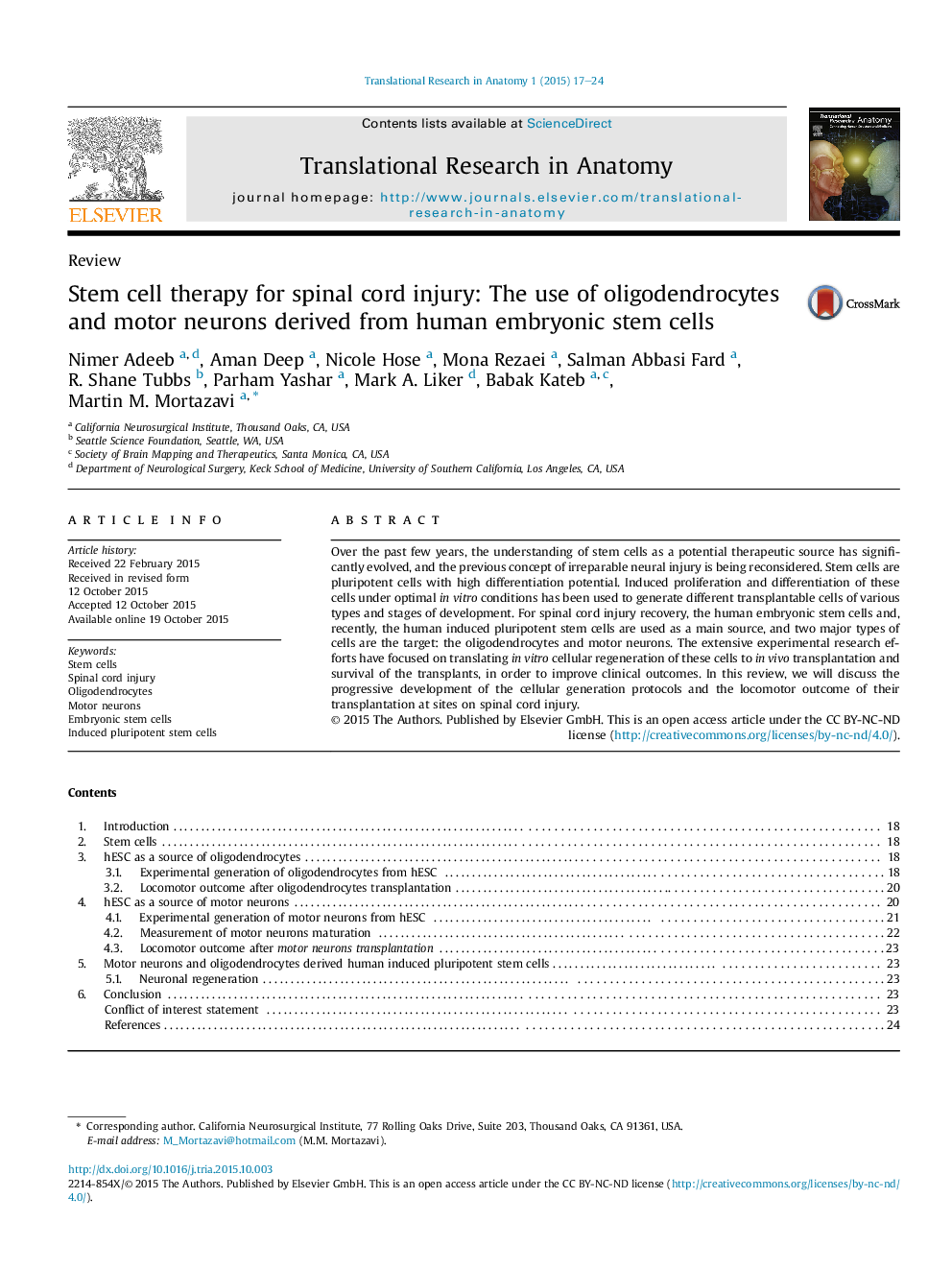| Article ID | Journal | Published Year | Pages | File Type |
|---|---|---|---|---|
| 3278489 | Translational Research in Anatomy | 2015 | 8 Pages |
Over the past few years, the understanding of stem cells as a potential therapeutic source has significantly evolved, and the previous concept of irreparable neural injury is being reconsidered. Stem cells are pluripotent cells with high differentiation potential. Induced proliferation and differentiation of these cells under optimal in vitro conditions has been used to generate different transplantable cells of various types and stages of development. For spinal cord injury recovery, the human embryonic stem cells and, recently, the human induced pluripotent stem cells are used as a main source, and two major types of cells are the target: the oligodendrocytes and motor neurons. The extensive experimental research efforts have focused on translating in vitro cellular regeneration of these cells to in vivo transplantation and survival of the transplants, in order to improve clinical outcomes. In this review, we will discuss the progressive development of the cellular generation protocols and the locomotor outcome of their transplantation at sites on spinal cord injury.
